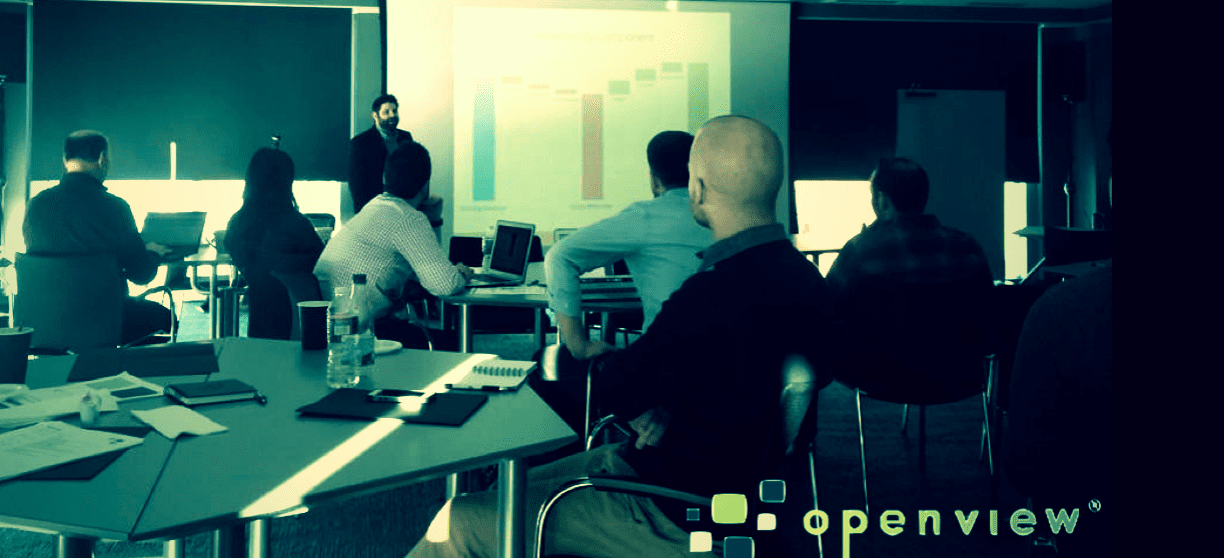As a die-hard Pittsburgh sports fan, I’ve learned to avoid the 617 area code Boston region in the months following their regular inevitable sports championship of one kind or another. Furthermore, with near-all-time-record February snowfall, this month wasn’t the ideal month to convince a California transplant to come visit the “City of Champions.”
But when OpenView Ventures, a New England-based venture capital firm with a track record of creating phenomenal content about SaaS, invited me to participate in its 2-day session for its portfolio companies 100% focused on Customer Success, I was honored to accept.
Though I winced a bit when the pilot announced single digit temperatures as we landed at Logan airport – and grimaced further as people pointed out the Patriots parade route through the snow – I didn’t regret my decision one bit after 2 days of great discussion.
For some context, boards and investors are realizing that Customer Success is critical to business success for recurring revenue businesses. To this end, nearly every venture capital firm has advised its portfolio companies to focus on strategies to maximize revenue from existing customers. Some have actively blogged about the topic while others have hosted panels and webinars. OpenView was one of the first I’ve seen to implement a 2-day, hands-on Customer Success workshop like this.
The session was so good that I took ~10 pages of notes and I thought I’d share my big learnings here. I kept company names out to preserve the spirit of confidentiality in the session.
1. Customer Success Is About Empowerment
A number of people often ask me “Is Customer Success really new or is it the next evolution of Customer Support or Account Management?” And of course the answer is “both!”
It’s new in its importance and in that it’s the synthesis of several professions. But what’s not new is that great customer experience depends on team empowerment. One inspirational keynote speaker shared memorable stories from well-known B2C companies where front-line agents were empowered to do the right thing for the customer – even if it was short-term suboptimal for the company. This was good to keep in the back of our minds as we entered the two days.
2. Customer Success Team Structure Matters
Once people embrace Customer Success – the “Why” of Customer Success – they often switch to the “Who.” Who should run the team? Where should it report to? And who should be in the team?
Several speakers talked about their team structure and hiring profile. While best practices varied based upon business type, a common theme was that organizational design really does matter. There’s a tendency for rapidly-growing companies to think “if you just put a bunch of smart people together, they’ll figure it out.” In Customer Success, with so many moving parts, roles and responsibilities matter a lot.
The more mature companies in the group tended to specialize roles between support, training, services and Customer Success Management / Account Management. One speaker even had pre-sales in his purview, ensuring alignment between customer expectations in the sales process and delivery. Several companies put significant CSM focus on onboarding and the “first 90 days.” A few companies aligned Customer Success segmentation to the sales team structure while others aligned it slightly differently due to issues in scaling.
Some earlier-stage companies put Customer Success as a role of the sales team, though this tended to be less common as companies scaled.
3. Customer Success Profiles Tend To Be A Mix of Sales and Support DNA
One larger-scale SaaS company talked about implementing personality profiling tests across the company and finding that the most successful CSM team members tended to have a sales-like personality with more of a “we” (versus “I”) orientation. I thought this was super interesting and consistent with my gut feeling as well.
Others weren’t as formal in their approach but generally agreed that some sales orientation / personality was required to challenge customers. There was a robust discussion about whether team members from a support background can make the transition to a more proactive model. I’ve seen it work, but it does require a huge mindset shift.
4. Customer Success Comp Plans and MBOs are Getting More Sophisticated
Several presenters shared their CSM team’s comp plans. I was very impressed by the level of thought in measurement. While there is merit in simple plans based upon metrics like net retention, a few presenters argued for more granular plans that help CSMs focus on short and long-range activities to drive Customer Success including:
- Renewals and churn
- Cross-sell / up-sell leads
- Net Promoter Score (NPS)
- Product adoption
- Expansion of use cases in customers
- References and advocacy
Generally speaking, plans tended to be close to 80/20 in terms of base versus variable compensation. Check out this webinar we did for a deep-dive on Customer Success compensation.
5. Customer Success Is Becoming More Measurable
Related to this, several presenters shared how they measure their overall team internally at the exec team and board level. Two presenters separately talked about separating:
Metrics about business and financial success – like net retention, churn, up-sell, advocacy and the like
Metrics about customer success – like usage, key feature adoption, customer satisfaction and customer value
Nearly everyone concurred that the last one – customer value – is one of the toughest to measure. For horizontal products in particular, each customer of a product might have a different definition of value and success.
6. Tiering, Scaling and Standardization
Nearly everyone talked about the challenges of continuing to deliver Customer Success as they scaled – particularly if they couldn’t grow headcount commensurate with their client base. The common desire was to tier customers in an intelligent way and scale the approach based upon the current and potential value of the customer.
7. 1-to-Many Isn’t Just for Marketing
In the theme of scale, several customers talked about a desire to have more low touch communication with existing customers in an intelligent, activity-driven way, like they do with leads. One presentation in particular talked about a fully-instrumented customer journey where users were scored based upon activity at each stage and received tailored communications so they didn’t feel like “they were being marketed to.” This is a big trend in CSM.
8. Customer Advocacy
Tying it all together, nearly every attendee had a story about the challenge and opportunity in advocacy. The challenge was satisfying the need for references – the email from sales looking for “someone who uses our product with these features in the Oil and Gas industry in Kansas!” The opportunity was how much customers are willing to do if you ask them. I think Customer Success teams will take a lead on advocacy and invest a lot more there in 2015.
9. Culture
As with any management discussion, we realized that a huge part of Customer Success is the bigger message the company is sending. How much time is the CEO spending with existing customers? What celebrations does the company do for Customer Success (versus business success)? How is the rest of the management team compensated to drive Customer Success?
10. It’s Tough!
The best part for me was the closing on day 2. One of the attendees led the group in a “circle of trust” where we shared our honest challenges. And the common theme was none of this stuff is easy. All of us have rapidly-growing businesses and are often also creating new product categories with new buyers. Keeping it all going without burning the team out is a significant endeavor. But based upon the energy in the room, it’s clear that this discipline is the future – so it’s hard but worth it.
Big thanks to the attendees for all of the lessons I took away. And huge kudos to the good folks at OpenView for putting this together.
Next year, let’s do Hawaii though!

